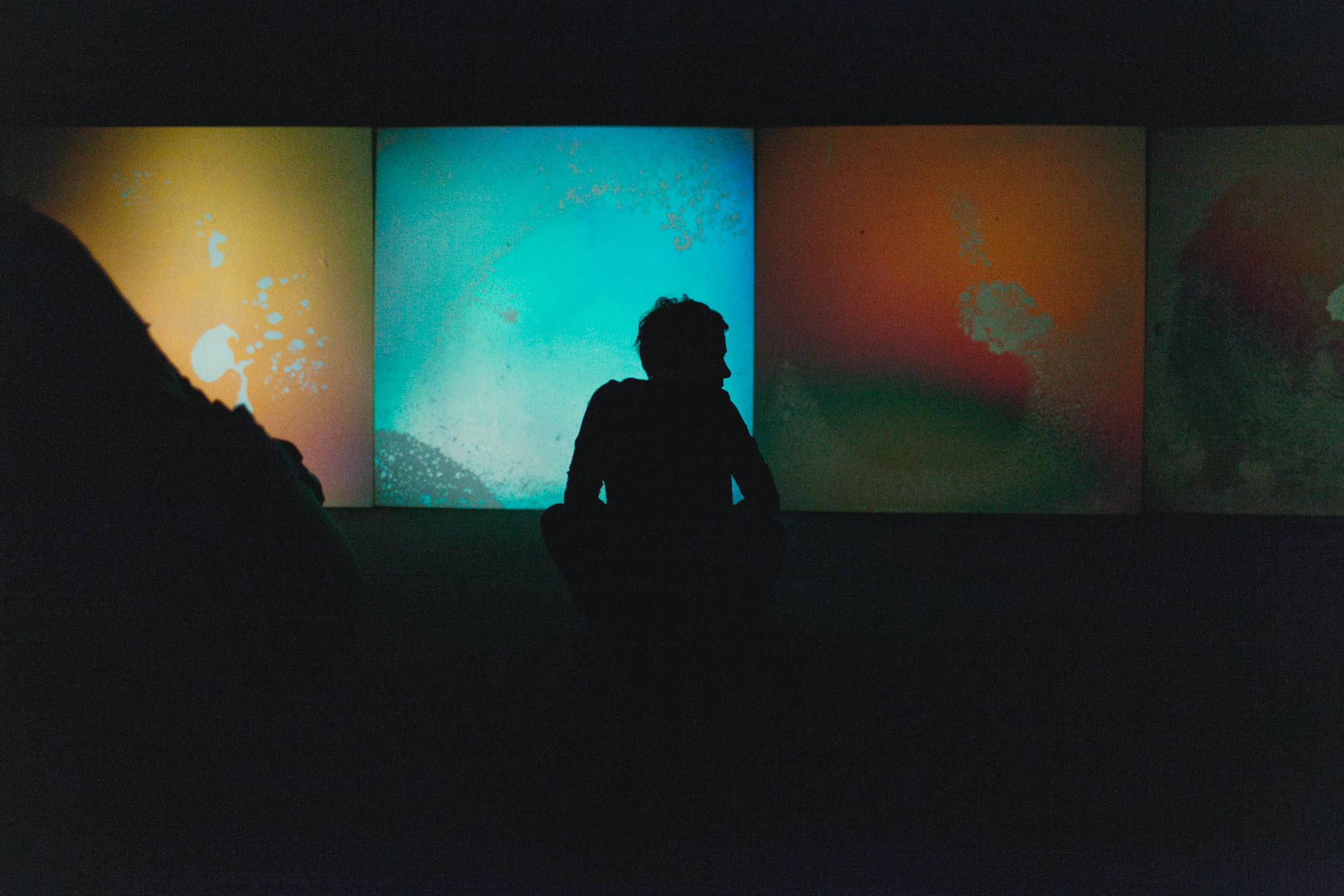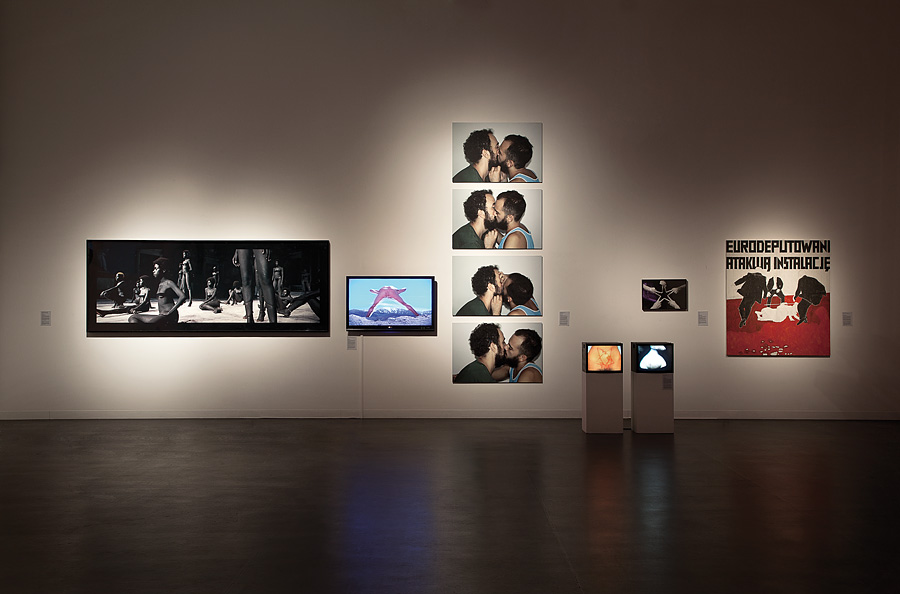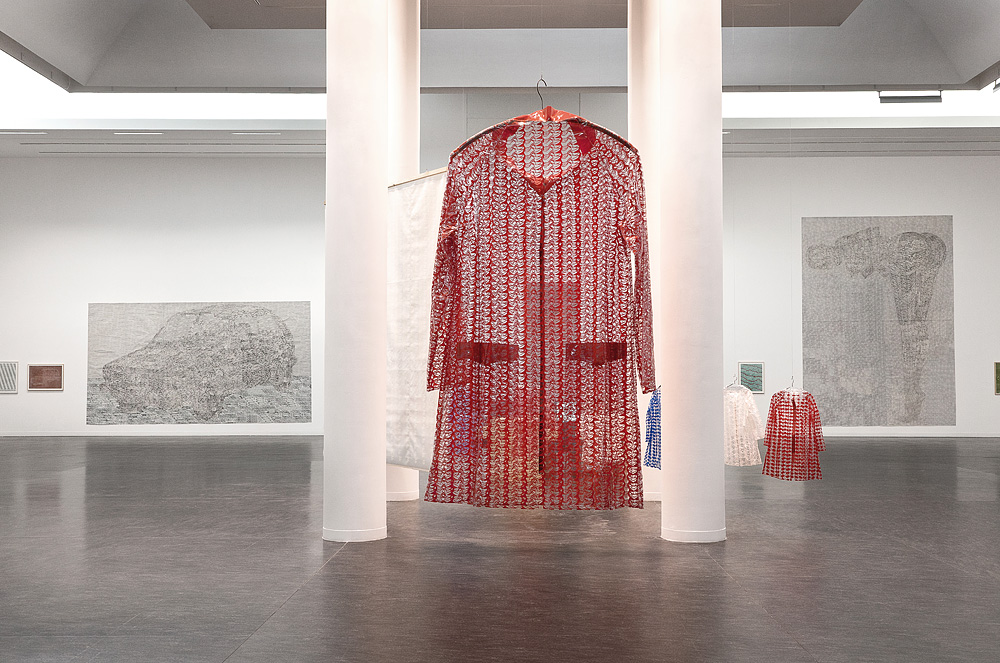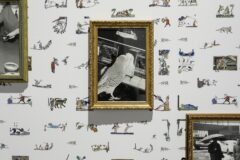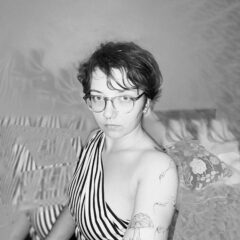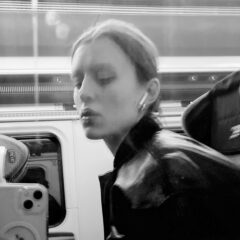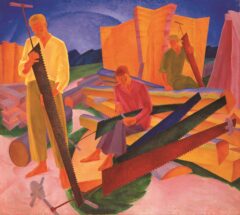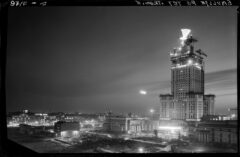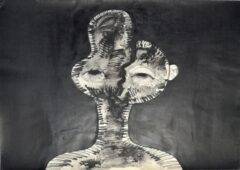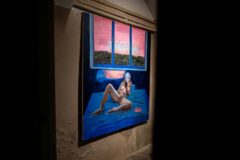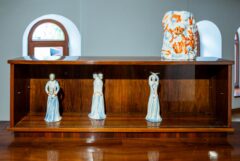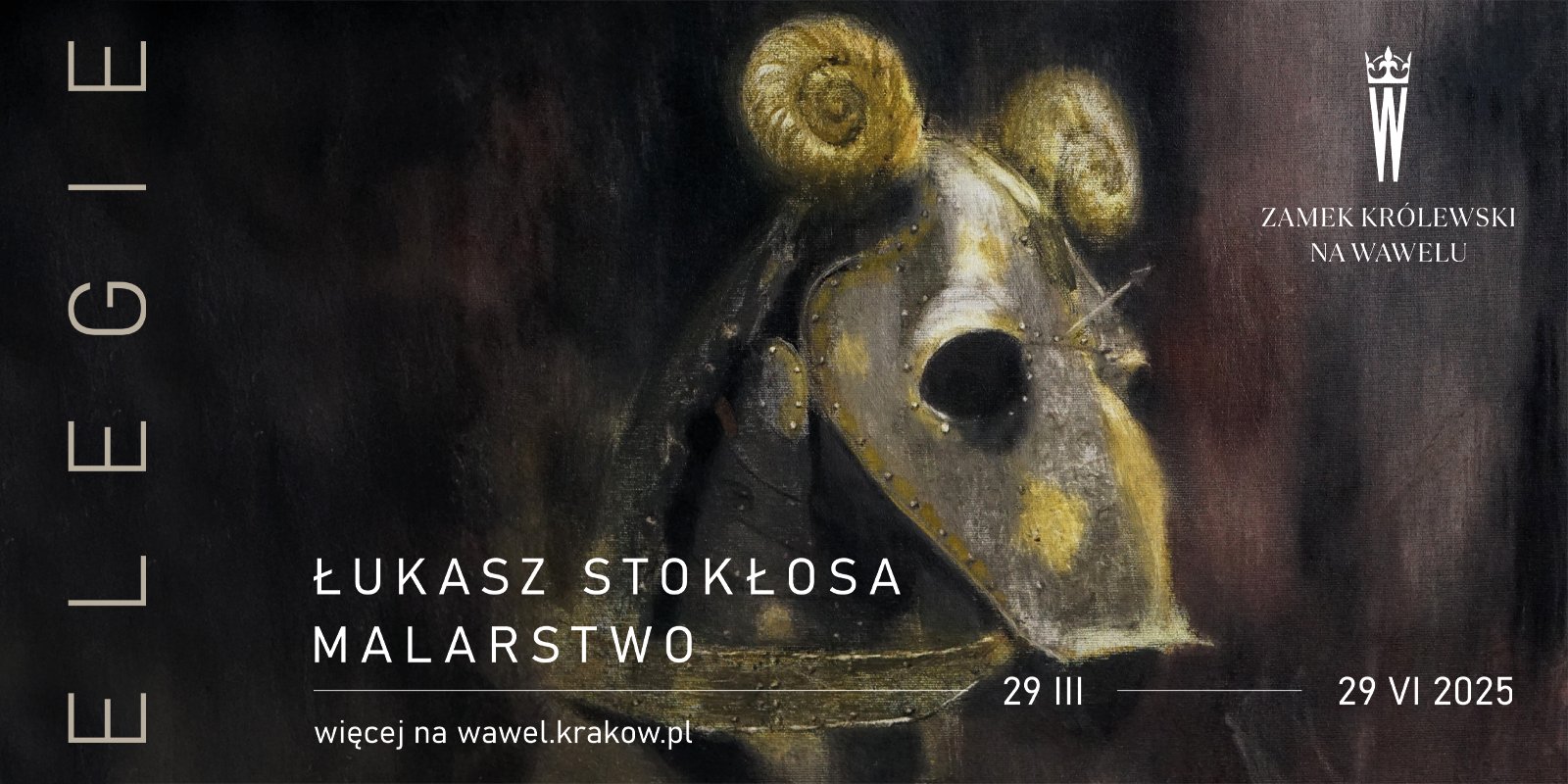Spaceship Toruń. Interview with Dobrila Denegri
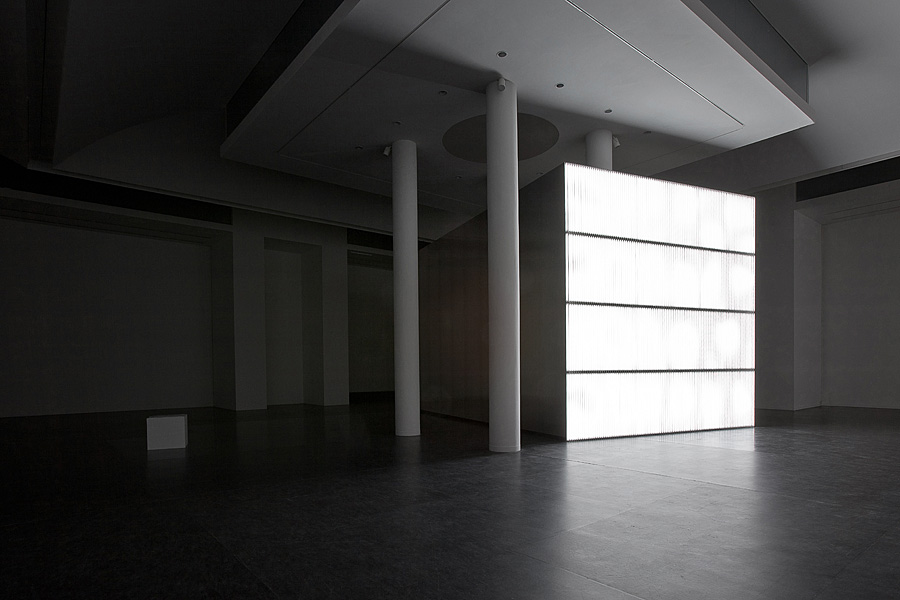
Adam Mazur: You’ve just said that you have finished your work in Toruń. What does this mean to you?
Dobrila Denegri: My contract in Toruń finished in December. We started the project of the retrospective of Gustav Metzger almost one and a half years ago, when we applied for an EEA Grant together with the co-curator of the show, Pontus Kyander. We got this grant and that meant that I was supposed to carry out this project until its completion. This is the reason I’m still collaborating with the Centre of Contemporary Art, but I am not the artistic director anymore.
So what are you doing right now?
I’m starting with a new type of engagement, which is in a certain sense the result of what I was doing in Toruń. My entire program was marked by the idea of transdisciplinarity and I tried to address this through various exhibitions. Initially, with the show Spaceship Earth, which was connecting art and science, but also architecture, design, fashion… everything that had to do with the application of technologies, from the 60s till today… In a certain way Wonderingmode was a spin-off of this exhibition, one which addressed in a more direct way the intersection and hybridization of different practices which are predominantly fashion-related. I did a great deal of research and got really interested in forms of creativity which are connected to fashion, but at the same time very distant from what we conventionally call fashion and the fashion-industry. While doing research for this exhibition I realized that I would like to find a way to work more on this subject. So, now, I’m working on the possibility of establishing a platform, a kind of research centre, which will bring together artists, architects, fashion designers… In practice it’s something in-between an academic and museum approach, and will consist of lectures, workshops, exhibitions… so even if it’s a different frame than that of the “art world”, for me, it is still the, same type of curatorial approach. It is something that really belongs deeply to what was always interested, even before I got involved with art in a professional way… So now I am at the beginning of this new adventure, where I basically have to create something from scratch.
It’s more like a research or an academic position?
As I mentioned, I see it as a practice which has to do with the sphere of education, but at the same time it’s quite experimental and open. The project I’m working on right now is called “trans-fashional”, so it is about the possibility of transcending the boundaries of the conventional notion of fashion, through cross-disciplinary projects. One segment of it consists in working with the idea of poly-sensoriality, involving people who work with sound, with smell, with taste, with touch, in relation to fashion. Actually I am pretty much surrounded by people who have an artistic background or come from fields of new technology or scientific research.
Basically, it doesn’t sound like it would have anything in common with the Gustav Metzger show…
Not at all, no (laughs). Well, you know the funny thing is, I was doing a lot of research and I found out that actually some of the people that I am involving in the fashion project were somehow involved with Metzger. So it doesn’t have any concrete relation, although Pontus Kyander, the co-curator of exhibition, found in Metzger’s private archives fashion drawings made by him and his brother in the 40s! Believe it or not (laughs). So you never know where fashion can pop up. But I don’t see this new engagement as something particularly different from what I was doing. Of course, it is within a different context, but at the same time I don’t see why I should have some kind of pattern in my career.
Tell me about this program that you made especially for Toruń. It was like four years of exhibitions and collateral events. Some of them were quite big, like Gustav Metzger’s show which is perhaps the biggest solo show held at the CCA. How would you sum up your program at the very end of it?
When I was contacted to apply for this position I was asked to make a proposal for a program. I prepared quite a concrete outline for the four-year period, considering that it needed to be “designed” for a fairly young institution which still had to profile its identity, and which had to communicate with an audience that wasn’t so familiar with contemporary art language. Toruń wasn’t a place with a very developed art scene, so I was asking myself how can I create a program which will be sophisticated in terms of ideas, which will show artists working at a high level, and at the same time will be communicative to a wider audience. Transdisciplinarity was a keyword. Also thematic coherency and the relationship between different exhibitions, group or personal, was an important point. The thematic track was given by the large-scale group exhibitions which were conceived as presentations of current art, but through certain types of historical perspectives. They dealt with the continuity (or discontinuity) of certain artistic approaches, from the 60s or 70s up till today. For instance, the first one, Spaceship Earth, was about art/science/technology/ecology, as addressed today through a variety of practices and artistic approaches, but with Buckminister Fuller as its ‘hero’; Theater of Life which dealt with art/theatre/sound/dance referred to John Cage, while the latest one, Arena, refers to Joseph Beuys in it’s attempt to talk about role of artist as a social agent… So in all these exhibitions the majority of artists were young, but their work was thematically contextualized in relation to some, according to me, important historical figures and moments. I was also keen to include Polish artists, and in particular some which haven’t often been presented in Poland, such as Piotr Kowalski, who to me is incredibly fascinating, but since he left Poland early, he is seen more as French, or Alicja Kwade who is big in Germany… The second important aspect of this program for me was to interlink exhibitions thematically. To take this latest season as an example: we started with Arena, then we had a solo-project with Alfredo Jaar, and then a retrospective of Gustav Metzger… I was hoping that in this way the audience could get deeper into the content of the art that we were showing, learn more, make connections…
On the other hand me being a foreigner, asking myself how I can do something for an institution like this, which is not positioned in the centre, I came up with the idea to invite foreign curators to make research in Poland, to select an artist or artists and curate a show for Toruń, which we would produce a catalogue for and also some new works. Part of this project was that Polish artists might then be presented in some of the foreign institutions from which the curators were coming from. I’m glad to say that this part also worked really well.
So even if transdisciplinarity and an international orientation were key to differentiating my program from the program of the previous curatorial team (which I think was also very good and sophisticated), I also wanted to maintain some continuity. In particular with the efforts that Joanna Zielińska and other curators made to raise awareness about the importance of the collection. So I decided to continue with that and we did a few exhibitions about collecting.
When it comes to Joanna Zielińska and her team the point is that they actually did a quite, as you said, sophisticated, interesting program, but they actually failed when it came to communicating this program to the outside world, also to the local art scene, including the politics and people who were deciding about the future of the institution. What is your impression when it comes to you and to your program? What was the result of your activities for this institution, for this art scene?
You know, for me it is hard to judge. I think others can judge if this program was interesting, or if it had some kind of appeal or how it appeared nationally or locally. I know that everything I did was done with a certain idea, a certain strategy.
But did you have some feedback from the local artists or “local people” – whatever that means?
I can’t say that I was really searching for feedback from the generation of artists which are teaching in the academy. I immediately understood that if this centre has any sense at all, it is if it is useful for the younger generations. I was quite motivated to open up the program to projects devoted to young artists, and I asked curators Piotr Lisowski and Marta Kołacz to work on that idea. I just told them: ‘this is the space, this is the money’ and I would like that we do a program with students and young artists – something to allow these young people to grow creatively and intellectually. The curators and the artists/students were totally free to do whatever they wanted and of course they used this occasion well and made PRZEprojekt. Later, I asked Piotr Lisowski to develop this work further with young Torunian artists, putting them in dialogue/confrontation with other young Polish artists. I tried to foster the idea that this Centre shouldn’t only be a place in which you have to do a program for a general public which still hasn’t enough knowledge to fully understand the language of contemporary art. So one point was to have an educative approach towards the audience, through certain types of large-scale thematic exhibitions; but then, as I said, I think that if there is a purpose that a place like CCA should have, it is to be useful to local younger artists and whatever is happening there – let’s say a potential art circle. For me this potentiality was seen through young people.
After four years, I have to say that I have seen a big change, both in the quality of the work of young Torunian artists, and also a change in the structure of the audience which frequents the Centre: it is also very young, fresh and numerous.
These shows that you curated in Toruń – were they traveling also abroad or they were specifically dedicated to this particular venue?
No, they were specifically done for this institution. In the beginning I was focused on making CCA a functional place, and also orientating myself within this, for me, new context. Probably if I would have stayed longer I would go more in the direction of looking for partnerships, looking for exchange, looking for more contacts with the Polish art scene as well. But these four years were also quite intense, energy- and time-consuming, just in doing what we were doing in that moment. But Metzger’s retrospective will be shown in Norway later this year, and we hope to make it tour more.
Was it intense because you had to establish relations with the team and the institution? How would you comment on it? Recently very strange things have been leaking out of the CCA.
This institution had very bad press when I arrived. Prior to engaging myself with CCA in Torun, I had a connection with the magazine that was run by Paweł Łubowski, but I didn’t know him personally. I was in touch with Marta Smolińska, a co-editor of „Artluk”, and she informed me about the open-call for artistic director. I agreed to submit my application and program-proposal, but I wasn’t really expecting to find myself in Toruń. In the beginning it wasn’t easy to overcome all these inner conflicts and at the same time find a way to deal with the Polish art scene. As soon as I got there I understood that there was a petition signed by the majority of the Polish art-establishment. I really had to find the right way to make this institution appear more serious and more professional. As a foreigner I also thought that I might bring something different than anybody else, and that’s what I tried to do. At the same time I tried to give opportunities to the in-house curators. I worked with the entire team in a way to make them grow professionally. Now this institution really can carry projects at a high level. It would really be a pity if that was lost. I don’t know exactly what the plans of the local authorities are. There were some voices about the open-call for the new director and it was supposed to be in February, but nothing has happened so far. For the moment Krzysztof Białowicz, a senior curator, is holding the position of acting director. The program of exhibitions for 2015 is the one assembled by Paweł Łubowski. When asked by the local Torun press about my opinion for the direction of CCA, I suggested a very simple, and very logical consideration: this institution should be treated like all other important Polish institutions for contemporary art. There are high-profile professionals in the position of directors in important institutions such as Zachęta and Warsaw MoMA, Muzeum Sztuki in Lódź, MOCAK in Cracow… I mean people who know what such an institution means and who have the motivation to run it in a proper way. A cultural institution can’t be run by the same parameters applied to, let’s say, a company; it doesn’t only have to be subjected to quantitative judgments (like the number of tickets sold, for instance). There are many qualitative parameters to take into account when evaluating the work of a cultural institution, and it is important that the authorities, under whose responsibility the institution is, have this awareness.
During last four years did you have any opportunity to curate shows outside of Toruń? Or is this the only venue that you worked for?
Bigger projects I only did in CCA in Torun, maybe some smaller one I was doing elsewhere.
Previously, before you started to work at CCA Toruń, you were working in many venues.
Yes. I was working within different institutional contexts. After graduating in Italy, I started to work as a curator in the, then newly opened, Museum of Contemporary Art in Rome. Beside some exhibitions, I was curating a lecture-series for five years called Art Highlights, which brought to Rome some of the biggest names of the art world. My concern was how to do something that will, on the one hand, raise the visibility of this new museum in international circles, and on the other, identify a museum as a place of the production of meaning, not just an exhibitive site. At first I was interested in exploring different curatorial approaches, through the involvement of veterans like Harald Szeemann, Jan Hoet, Achille Bonito Oliva… but also those who were a part of a new generation, like Hans Ulrich Obrist, Daniel Birnbaum, Nicolas Bourriaud… I was then also very much interested in transdisciplinarity, inviting not only artists and curators, but also people active in the field of fashion, design, architecture… and later some protagonists of, then really new, emerging scenes, like China, India, the Middle East…
On the other hand, I’ve also worked within a quite different institutional frame, together with my mother, Biljana Tomic, with whom I made one of the biggest, for those years, platforms for young artists and art students – a project called Real Presence which gathered in Belgrade more that 1600 participants from all over the world. And when we started we just had one computer and two phones… and a lot of enthusiasm, because we wanted to mark the moment of the beginning of democratic change in 2001, after the fall of Milosevic’s government. Probably it is for this reason that I had such attention towards young artists in Toruń.
What would be your opinion on the Polish art scene after all these years of struggling here for good and for bad?
I think I always did really good PR for Poland because I’m amazed by the high level of artists, of the generally high level of intellectual discourse here. I was really deeply impressed by the consistency of curatorial approaches and artistic projects. I really didn’t know what to expect when I arrived, but what I felt here was a kind of energy, like when you’re surfing on a wave that’s going up. I think you have an amazing amount of energy, willingness, and lot of young people in the scene who are opening galleries, creating their own networks and so on. My impression, and I think also of when I was inviting foreign curators here to do research (and some of them did quite thorough research) is that Warsaw is the place to be. Something is really happening here and I think that Poland is very well on track for integrating into this bigger sphere of international art.
From my perspective you were always very alone here in Torun. Something like ‘all by yourself’ when it came to support from the institution (or rather lack of support). On the other hand there was also no real team, because it was a bit destroyed amid the institutional crisis… At the same time here you have got in the middle of this very tough situation with Paweł Łubowski being boycotted and so on. Another negative factor was this unfortunate presence of another Italian curator, namely Fabio Cavallucci at CCA Ujazdowski Castle in Warsaw. How did you manage to handle all those things?
When I came in Toruń, Daniel Muzyczuk and Agnieszka Pindera were still curators here although they were in the moment when their contracts were expiring… My first gesture was anyway to involve them. But in a later stage it became obvious that it was not possible for them to keep their position in CCA. I also told them, in quite open way, they were too talented to stay forever in Toruń. They had to move on and seek for a wider platform. CCA in Toruń has a fantastic building, it’s a great facility, but when you are doing something you have to have a parterre to address. Especially if you are young curator, after a while it’s important to measure yourself within an environment which can stimulate you more.
Regarding Fabio Cavallucci- we didn’t know each other before. We met in Poland and did one project together, an exhibition of Robakowski. If you ask me about my approach as a foreigner – I had a certain type of sensitivity because I was always a foreigner. Even when I was working in Italy – I was a foreigner. I know what it means to be in a place where you have a certain kind of communicational gap anyway. Not because you don’t speak the language but simply because the field of reference is different. The way we translate things in our heads is different because it depends on our education and the frame of cultural references that we acquire. When having to deal with complicated situations, I understood that sometimes it is good to make a step backwards, to think better, be sensitive to the context and learn from it… Anyhow, I think it’s important for Poland not to close itself to foreign curators, just because of the Cavallucci’s episode with CCA in Warsaw.
I see my experience in Poland as a quite positive. As artistic director, I was curating my exhibitions, but I felt a responsibility towards young curators – to allow them to grow and progress professionally. I also thought that they had to have the possibility to do what they wanted. I think that you can get the best when you just give people the chance to to do what they feel is right. Of course, you can make a mistake – for sure I didn’t make all the right moves and not everything was magnificent. Of course I had some compromises. Having Paweł Łubowski as director meant that certain compromises, especially at the beginning, I had to accept. Later, Łubowski didn’t mess much with the program. Besides, he faced some pressure from local community and local authorities. Probably he wasn’t the most adequate person for the position of director of the institution in the first place, because he has a different background, being an artist and someone who worked mostly in publishing. In order to run a big institution, it’s important and valuable to have institutional background and experience in managing a museum.
If there was just one project that you did in Toruń and which you would like to represent or think of as the most important to you, what would it be?
That is a very difficult question. I don’t know, you can’t choose just one… If I had to say which is the topic that I liked to engage myself in the most, that’s for sure the exhibition at the very beginning: Spaceship Earth. It was an exhibition that was never meant to be done in such rush and under such tensions. But nevertheless, thematically speaking, I was always deeply intrigued by correlations between art and science, and I still feel very connected to the topics that the artists who were shown in this exhibition address.
Przypisy
Stopka
- Osoby artystyczne
- Gustav Metzger
- Wystawa
- Działaj albo giń! Gustav Metzger – retrospektywa
- Miejsce
- CSW Znaki Czasu w Toruniu
- Czas trwania
- 27.03–30.08.2015
- Osoba kuratorska
- Dobrila Denegri, Pontus Kyander
- Strona internetowa
- csw.torun.pl



